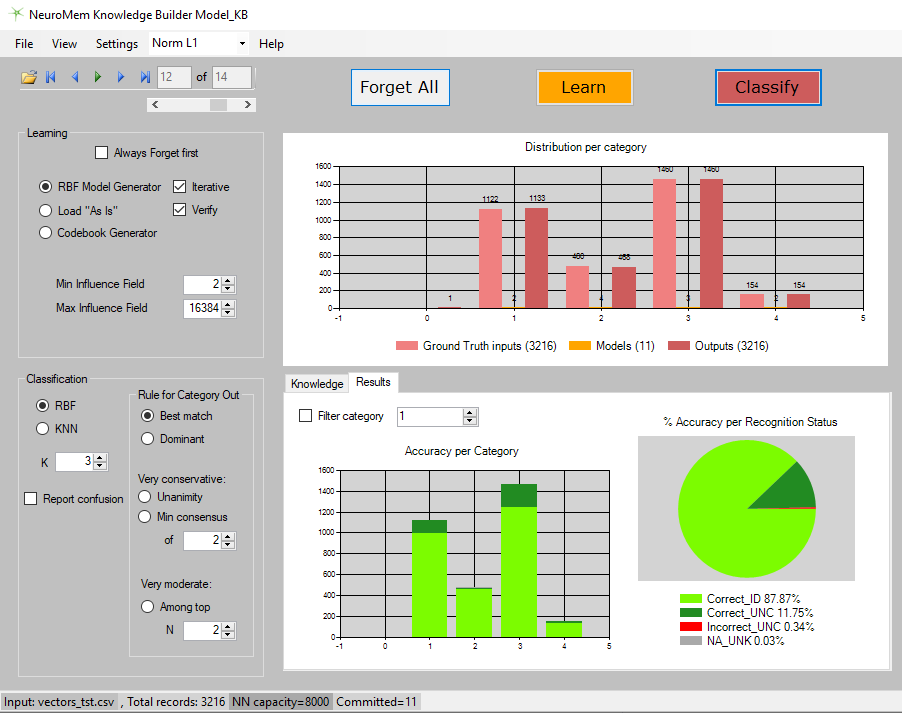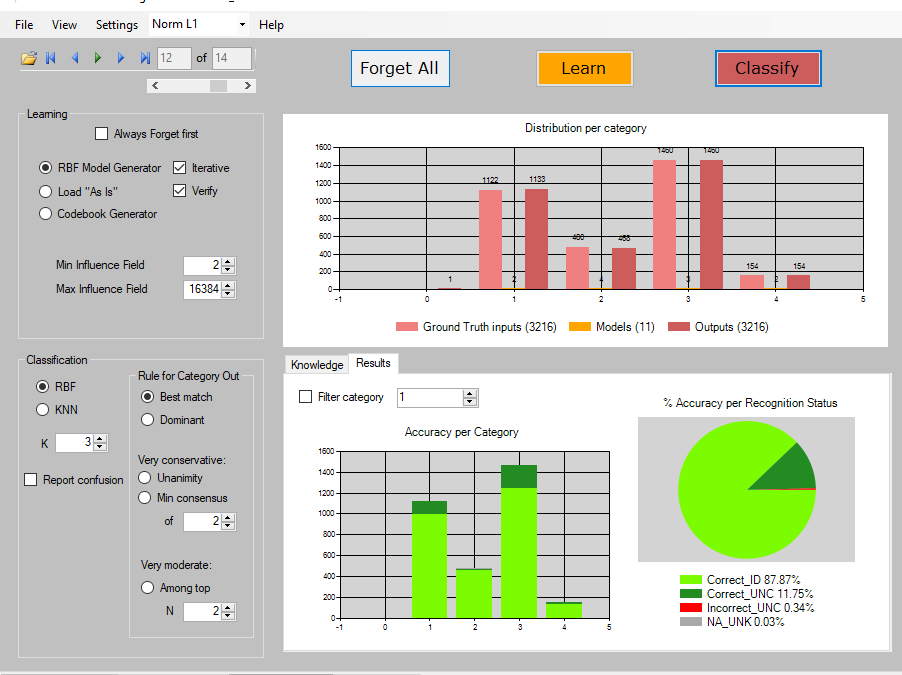General Vision is introducing NeuroMem Knowledge Builder (NMKB) version 4.0 with new and improved functions including the ability to learn and classify multiple files in batch, the selection of new consolidation rules to waive uncertain classifications, and more.
NeuroMem Knowledge Builder (NMKB) is a simple framework to experiment with the power and adaptivity of the NeuroMem RBF and KNN classifier. It lets you train and classify your datasets in a few mouse clicks while producing rich diagnostics reports to help you find the best compromise between accuracy and throughput, uncertainties and confusion, and more.
The application runs under Windows and integrates a cycle accurate simulation of 8000 neurons. It can also interface to the NM500 chips of the NeuroMem USB dongle (2304 neurons) and the NeuroShield board (576 neurons, expandable).

Simple toolchain for non AI experts
NMKB can import labeled datasets deriving from any data types such as text, heterogeneous measurements, images, video and audio files. The neurons can build a knowledge in a few seconds and diagnostics reports indicate if the training dataset was significant and sufficient, how many models were retained by the neurons to describe each category, and more. For the classification of new datasets, you can choose to use the neurons as a Radial Basis Function or K-Nearest Neighbor classifier. Other settings include the value K and a consolidation rule to produce a single output in case of uncertainties. The throughput and accuracy of the classification are reported per categories.
Building a knowledge with traceability
The application produces a data log to easily track and compare the settings and workflow which were tested on a given dataset. The traceability of the knowledge built by the NeuroMem neurons is conveniently exploited by NMKB. For example, you can filter the vectors classified incorrectly and comprehend why by comparing their profile to the firing models. This utility may even pinpoint errors in the input datasets!

Primitive and custom knowledge bases
Finally, the knowledge built by the neurons can be saved and exported to other NeuroMem platforms which can themselves use the knowledge “as is” or possibly enrich it if they are configured with a learning logic. A typical NeuroMem platform features a Field Programmable Gate Array (FPGA) and a bank of NM500 chips interconnected together either directly or through the FPGA along with the necessary GPIOs and communication ports for the targeted application. They all have in common that latencies to learn and recognize are deterministic and independent of the complexity of your datasets. The network’s parallel architecture also enables a seamless scalability of the network by cascading chips.
In addition to the NeuroMem Knowledge Builder, General Vision offers SDKs interfacing to NeuroMem networks for generic pattern recognition and image recognition with examples in C/C++, C#, Python, MatLab and LabVIEW.

